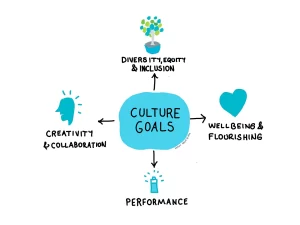Principles, Values and Policies. What’s the Difference?
In a recent family Shabbat observance, we discussed core principles and values, both from a Torah perspective as well as personal life experience. We all agreed that sometimes we feel some conflict between corporate values & policies and our faith’s core principles & values. This can make managing certain personal and professional challenges rather tricky.
It’s important to note there’s a difference between a value, a policy and a principle. A value is an opinion that people hold about specific issues or ideas. A policy is a set of guidelines designed to achieve specific goals within an organization. And a principle is a fundamental belief that guides behavior and typically represents an objective reality that transcends cultures.
For example, if one of my core principles is integrity – or adherence to an ethical code – I’m more inclined to adopt and support a corporate policy based upon my principle rather than the policy itself. If one doesn’t hold integrity as a core principle, then they may bend the rules a bit with respect to the policy. I then may hold an opinion – or value – that bending the rules, especially for some and not others, is a violation of both the principle of integrity as well as the corporate policy.
Corporate values and policies often define corporate culture. A corporate culture can certainly be influenced by key universal principles, but how those principles are operationalized in the workplace largely depends upon how corporate values and policies are managed by leadership and how readily they are adopted by employees.
What happens then when one’s core principles and values don’t align with the reality of a particular corporate culture? What do you do? You can certainly try to influence the culture to be more inclusive of diverse values, but it’s possible you may find yourself frustrated by leadership’s lack of desire or approach in addressing differences or inconsistencies.
When assessing “cultural fit,” it’s a good idea to not only define what your core principles and values are – and whether or not they’re in alignment with your potential employer’s – but to also ask leadership to describe how they manage diversity and inclusion with respect to differences between corporate culture and the individual values of it’s workforce. If leadership can’t answer that question in a clear and honest way, then it could be an indicator that they haven’t thought the concept of culture all the way through.
Designing Culture in a More Human-Centered Way
This line of questioning brings up the larger question of whether or not corporate culture can truly be designed, especially in light of diversity of thought and values. In a recent article on Medium, product designer and innovator, Kursat Ozenc, raises some rather interesting points. He suggests you can shape corporate culture similar to how an industrial designer approaches product design. He states, “Organizational culture is a living system that defines how people work together toward accomplishing collective goals. This live system consists of invisible and visible forces constantly interacting (borrowed the invisible and visible from James Heskett’s culture model). Culture’s invisible forces are norms, beliefs, and values. Culture’s visible forces are behaviors, practices, and other tangible artifacts.”
He goes on to note that “On the invisible side, designers can facilitate the creation of the foundational forces of culture, including values, norms, and principles. On the visible side, designers can craft four cultural interventions to reinforce virtuous cycles, including behaviors, (team) practices, policies, and stories.”
His approach to me seemed to provide a bridge between corporate mandated culture and employee-driven culture, taking into account the dynamics of both, and providing a framework for designing a more human-centered culture around four goals: Well-being & Flourishing, Performance, Creativity & Collaboration and Diversity, Equity and Inclusion.
These goals correspond to the corporate culture’s “why,” which is where every company should start with its evaluation. People are the heart of every company. By starting with better understanding the individual, companies can view culture from a more human-centered perspective instead of trying to force a mandated culture based solely on corporate values. One successful case study in human-centered culture design is Patagonia. You can read more about their approach and success here.
The quick summary: when you invest in the happiness and wellbeing of employees, that investment pays off in the long run.
Key human-centered value adds: 1) Hire people who are great culture “adds”, not necessarily culture “fits,” 2) Support and understand employees holistically, 3) Foster an environment of co-creation and joint decision making, 4) Engage in grassroots educational efforts
What do you think? Have you taken time to define your core principles and values? What do you look for when evaluating corporate culture? What advice would you give someone assessing a potential “cultural fit?” How do you think businesses can create more human-centered corporate cultures?

